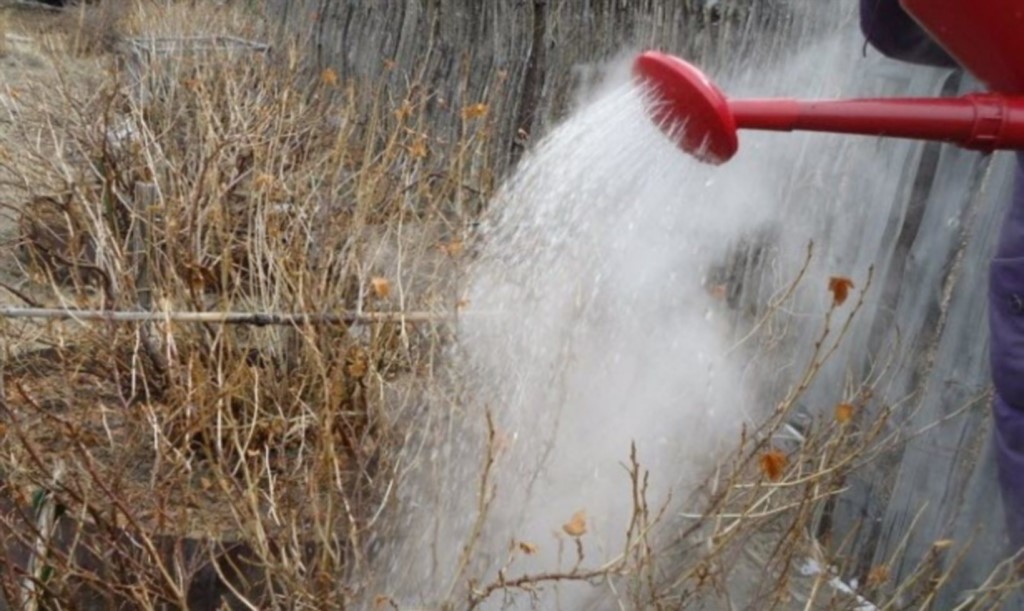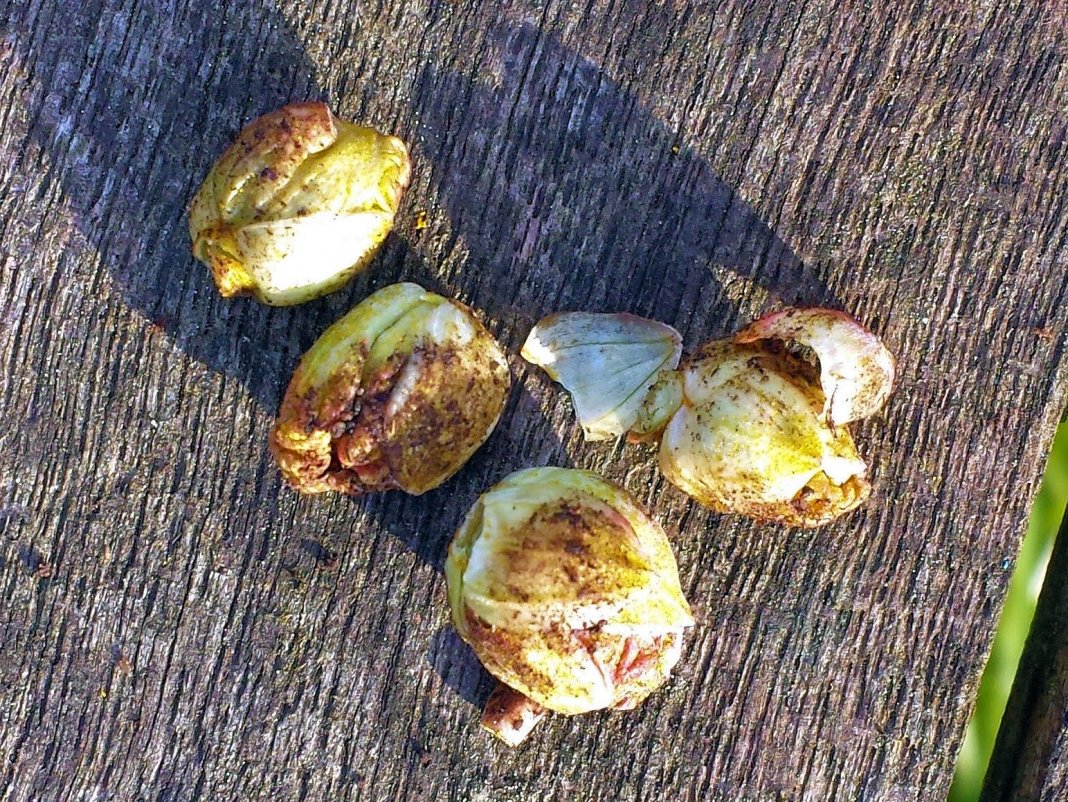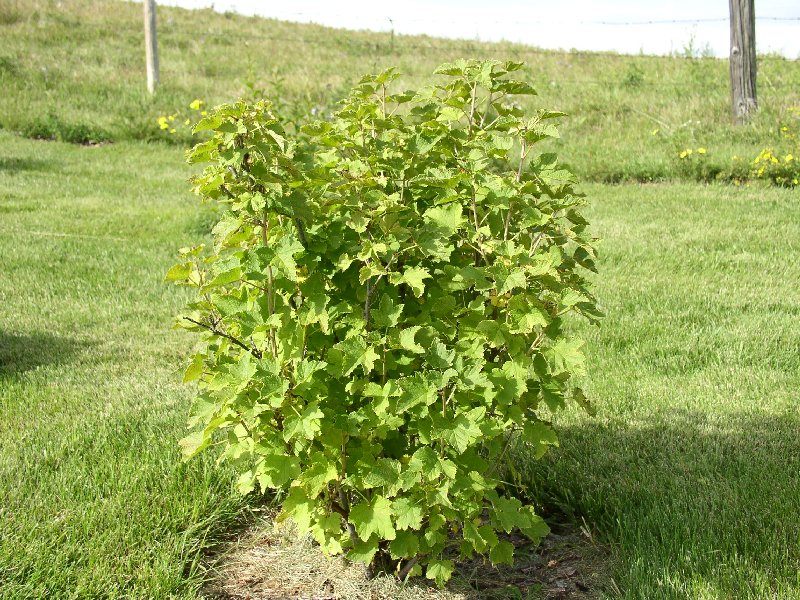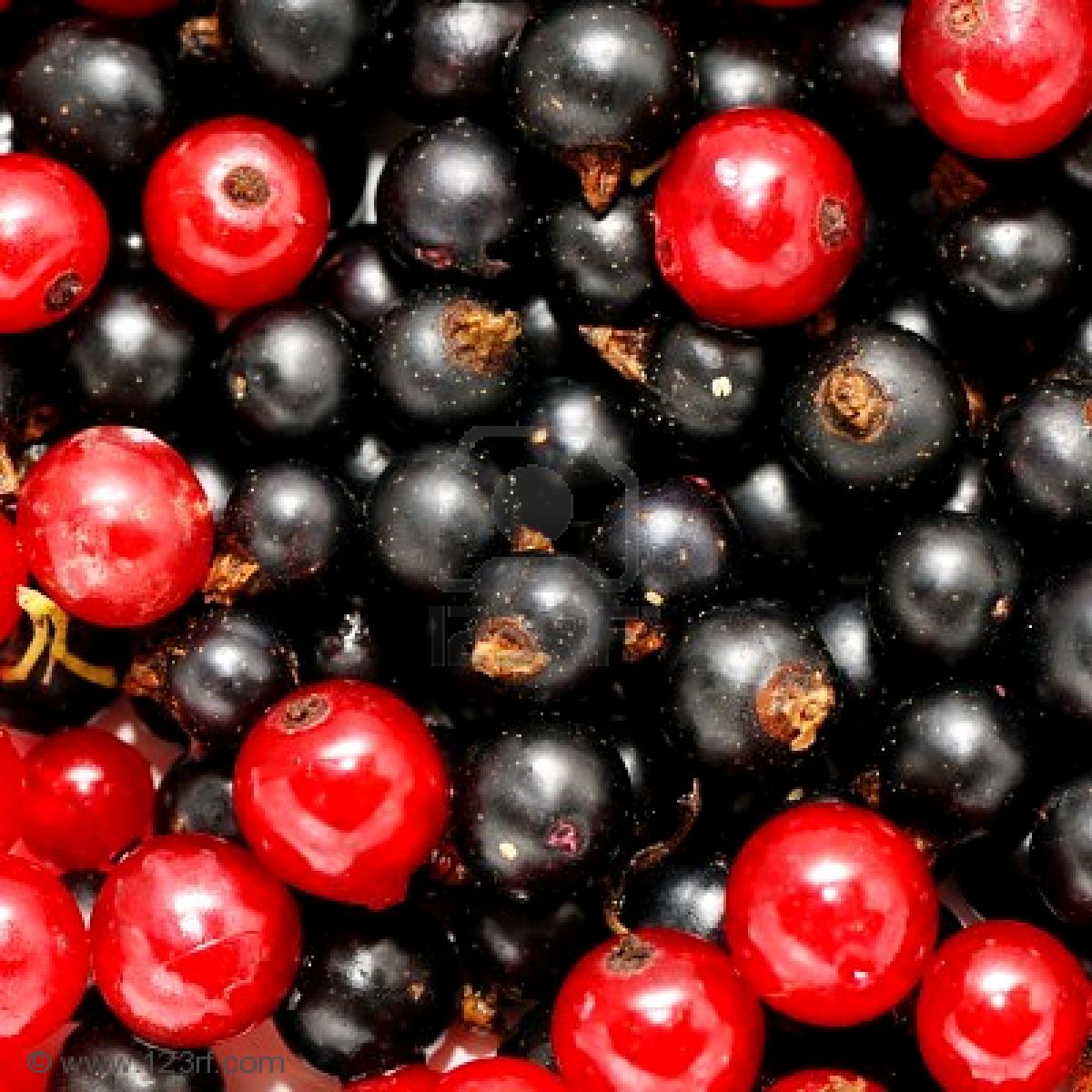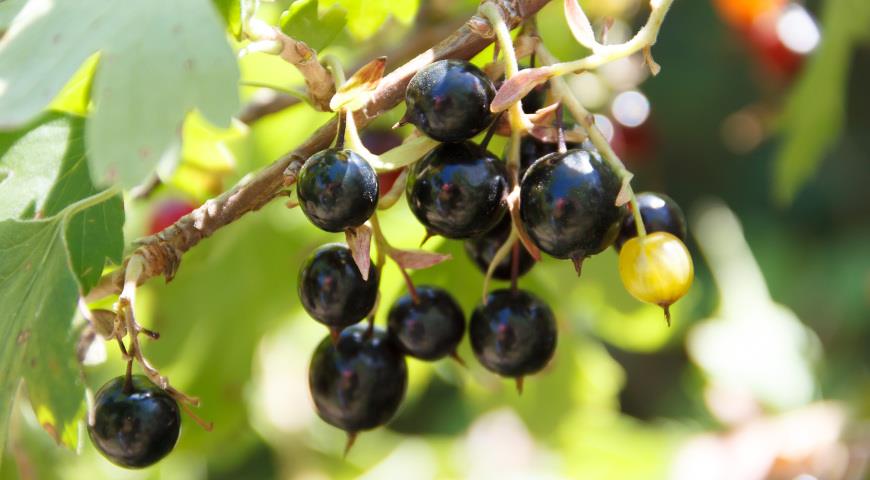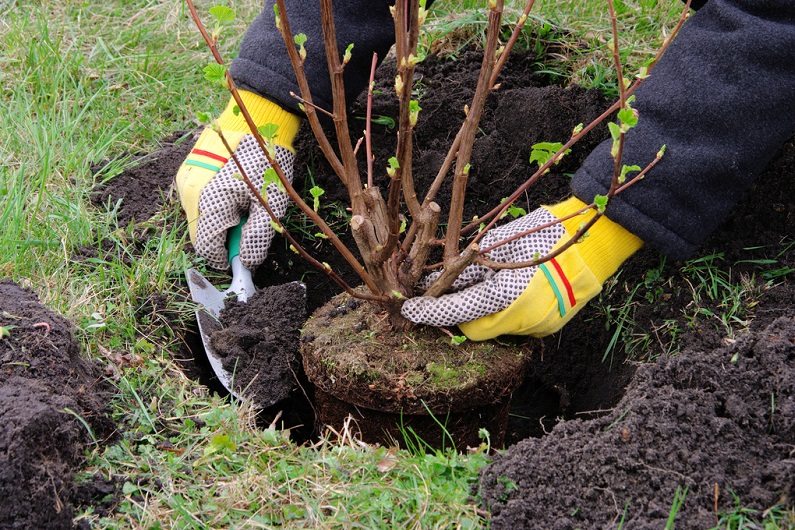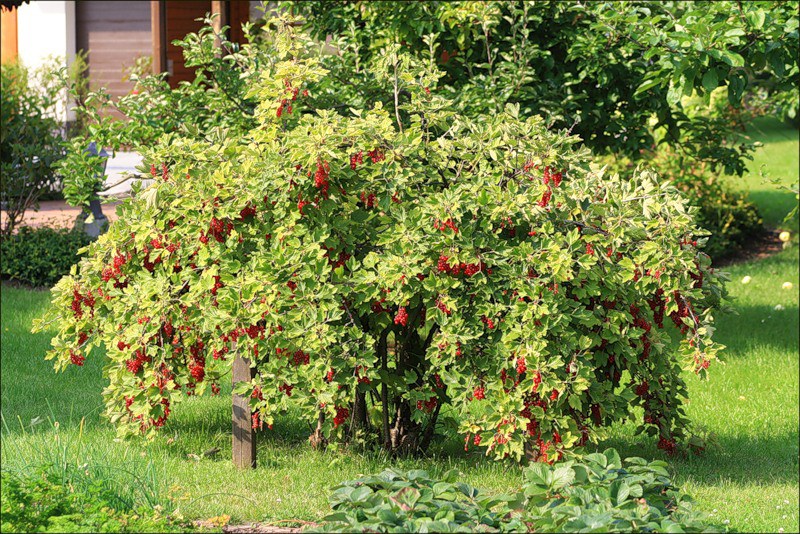Content:
Currant is a very popular fruit and berry crop among domestic gardeners. Despite the fact that the plant as a whole is not among the most whimsical, the shrub is very susceptible to the negative effects of insects. Therefore, pest control is ongoing. Sometimes in the process, not the most trivial methods are used. These include watering the berry bush with boiling water.
Processing currants in spring with boiling water is a way of effective pest control, proven by more than one generation of gardeners. This method was used already in those days when no one had heard anything about industrial insecticides. Currently, scalding is also used, and very actively.
Why process currants with boiling water in spring
Pouring boiling water over a bush allows you to simultaneously solve a number of problems. Boiling water perfectly protects the shrub from the kidney currant mite - one of the main misfortunes of culture.
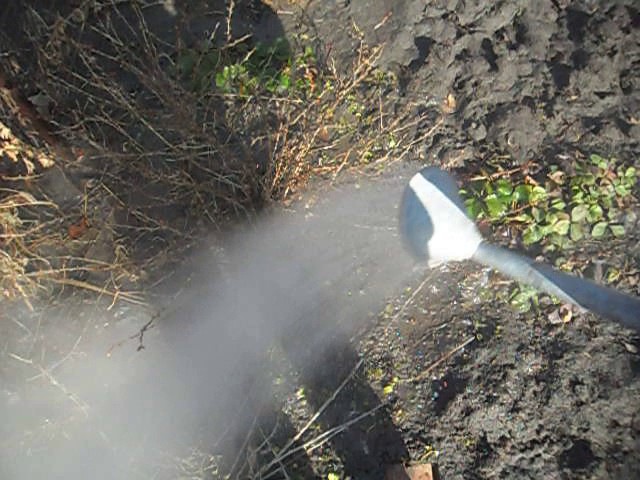
Spring scalding of currant bushes should be done before the plant wakes up after winter and resumes its growth
This pest carries a disease such as terry leaves. Usually the parasite lives in the kidneys, where it successfully survives the winter. It usually settles in a plant in the fall, and by the spring it wakes up with currants and begins to actively parasitize. Females of the currant mite lay eggs in huge numbers, and the number of harmful insects in the shortest possible time increases exponentially. The development of the buds in which the tick lives is very slow. Usually, a deformed leaf on the bush begins to signal the presence of a problem. Thickening on the buds can be seen even in winter, which will make it possible to prepare for the destruction of harmful insects.
The most effective way to make the year more productive is to scald the bush with boiling water. Both larvae and adults are very sensitive to high temperatures. Even light spraying will lead to their instant death.
Hot watering will be no less effective in the fight against fungal plant diseases. Previously, a similar spring method of processing was used by gardeners only on the soil. That is, water only poured onto the ground. It was believed that fungal spores are in the soil. But since some of them remain on the shoots, the technique quickly demonstrated its viability. Today, the currant bush itself is processed with boiling water.
If you do not fight parasites and let everything go by chance, insects will prevent the leaves from forming and growing normally. The same rare leaves that can survive will be underdeveloped. Do not assume that the problem with parasites is seasonal, and they will have time to die during the winter. Most pests successfully find themselves a reliable refuge with the onset of subzero temperatures, so that with the onset of spring, they will revive again.
At temperatures exceeding +40 degrees, the protein inside the larvae and eggs of the pests coagulates. Thus, a violation of the cellular system as a whole occurs.
Many people wonder when currant bushes should be watered with boiling water. The answer is obvious: the sooner the better. Some add components such as salt, potassium permanganate, iodine, soda or copper sulfate to the water. Such feeding increases yields and makes the bushes grow lush.
It is very effective to process currants with boiling water, because during the procedure the fruit and berry culture is under stress. So the tool turns out to be effective not only in pest control. Such watering increases the resistance of the shrub to various negative external factors, as a result of which the plant's immunity and productivity increase.
When to pour boiling water over currants
In order not to harm the shrub, it is important to know exactly when to pour boiling water over the currants. Theoretically, this can be done both in autumn and spring. But spring irrigation is preferable. Hot water, among other things, helps the plant to awaken after winter suspended animation. The soil is artificially quickly warmed up, and the growth of currants is activated.
The time when you need to water the currant bush with boiling water in the spring depends on which particular parasite or disease the plant is suffering from. If we are talking about a kidney currant mite, the water should be urgently boiled at the very beginning of winter, when the snow is just beginning to melt. In the middle lane, this is the end of March or April. In addition, autumn processing in a situation with mites will not give the desired effect. This is due to the fact that with the onset of winter, the buds are tightly closed with a crust, and the pests are reliably protected. The boiling water simply won't break through the ossified kidneys.
The elimination of powdery mildew and aphids by means of boiling water does not have to be done in early spring. In this case, it is permissible to spray the plant with hot water in the fall.
Before you start scalding the bush, be sure to pay close attention to what kind of appearance it has. If the buds have already blossomed, it is strongly recommended to wait with heat treatment. Indeed, in such a situation, the risk of damaging them is very high. In addition, if you water the plant too late, you can harm the root system, which will result in the inevitable death of the currant.
Autumn scalding should be done before the currants begin to dry, when there is no longer any greenery left on the bush.
Currant scalding technology in spring
Having figured out in what season and month the procedure should be performed, it's time to find out how to properly water the plant without harming it. Do not forget that we are still talking about boiling water.
The first step is to focus on the preparatory activities:
- choose currant bushes that require the procedure (as a rule, these are bushes with signs of illness or symptoms of the negative effects of harmful insects);
- determine the sequence of watering the bushes (the correct choice of watering tactics will help to ensure that the water temperature does not become too low for a successful procedure);
- tie the tops of the shrub into a bunch;
- prepare the necessary tool (watering can with a good spray, thermometer).
Answering the question of how to treat currants in the spring from pests with boiling water, it should be noted that in no case should the plant be watered with water that has just stopped boiling. The plant can easily get burned.The optimum temperature for watering should not be higher than +80 degrees. In the process of transfusion and contact with the branches of the bush, the water cools down by another 10-20 degrees. As a result, it turns out about + 60-70 degrees, which is optimal for successfully watering the plant without harming it and destroying all pests.
Watering should be carried out by means of circular movements, positioning the watering can in such a way that the boiling water flows freely onto all branches without exception.
The very procedure for heat treatment of currant bushes is as follows. The water brought to a boil is poured into a pre-prepared watering can, the water is allowed to cool slightly and sent to the watering site. You can sprinkle water on the branches first, but in general you should pour the plant evenly and thoroughly. In no case should you skip a single branch. Otherwise, all the effort spent will be in vain. It should take about five seconds on average to pour over each bush.
It is recommended to choose a metal watering can. Plastic models can deform when exposed to boiling water.
During processing, it is strongly recommended to bring the watering can spray as close to the plant branches as possible. This will prevent the water from getting too cold in the air. The very procedure for watering with boiling water should be done as soon as possible.
Summarizing all of the above, the following undeniable advantages of treating shrubs with hot water can be distinguished (in addition to getting rid of harmful insects):
- plant immunity increases;
- shrubs tolerate climate change better;
- the currant turns out to be better prepared for wintering;
- currant greens become more juicy;
- the plant begins to give more shoots.
Among the disadvantages are the following. If you water with boiling water too late or too early, the manipulation will not only not bring the result that the gardener expects, but will also weaken the currants. In addition, inexperienced people can easily burn the roots and the shrub itself.
Scalding bushes (it doesn't matter if we are talking about currants, gooseberries or other fruit and berry crops) is an excellent alternative to the use of chemicals designed to combat pests. This is a completely eco-friendly method that is safe both for the plant and its fruits and for human health.
Some particularly distrustful gardeners underestimate the effectiveness of watering currants and other horticultural crops with boiling water. They believe that this old-fashioned method has completely outlived its usefulness, and it makes no sense to turn to it. Moreover, on sale you can find a huge amount of a wide variety of insecticides, many of which manufacturers position as safe.
This approach is fundamentally wrong, and therefore it is absolutely recommended to try watering with hot water in practice.
At first glance, it may seem that there is nothing complicated in the procedure. But one has only to start working to understand that in reality everything is not quite the case. Despite this, the complexity of the procedure is not at all a reason to refuse such an effective treatment of the bush. Moreover, the result will exceed all expectations.
Watering garden plants with hot water at the beginning of the season has been practiced for centuries. This means that the method is time-tested and works great, despite the skepticism from some gardeners.
Deciding whether or not to process a plant with boiling water is a personal matter for everyone. Currants have been growing in gardens for more than a century, insects harm it for no less time. If our ancestors successfully dealt with the problem without the help of chemistry, why not follow their example.
